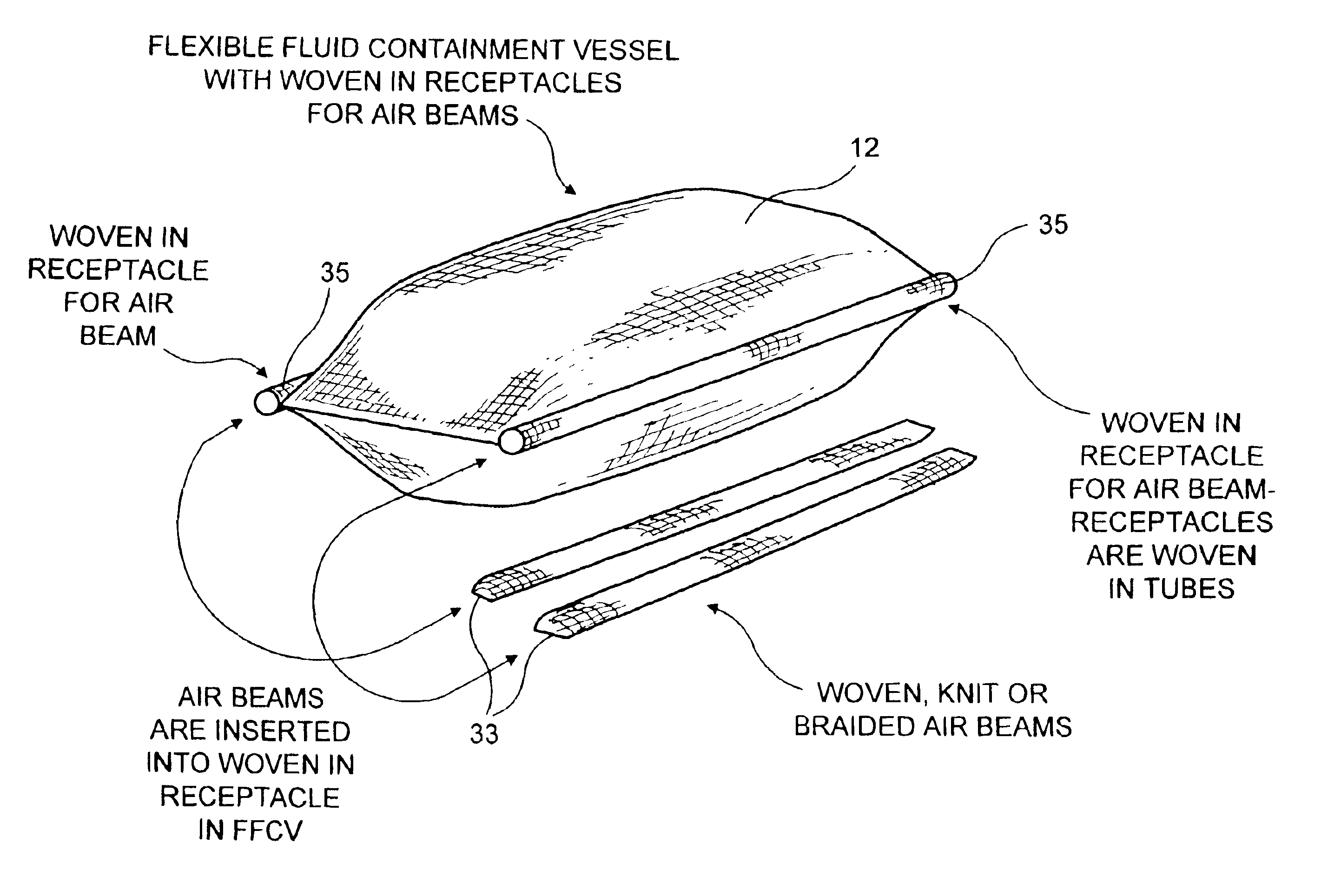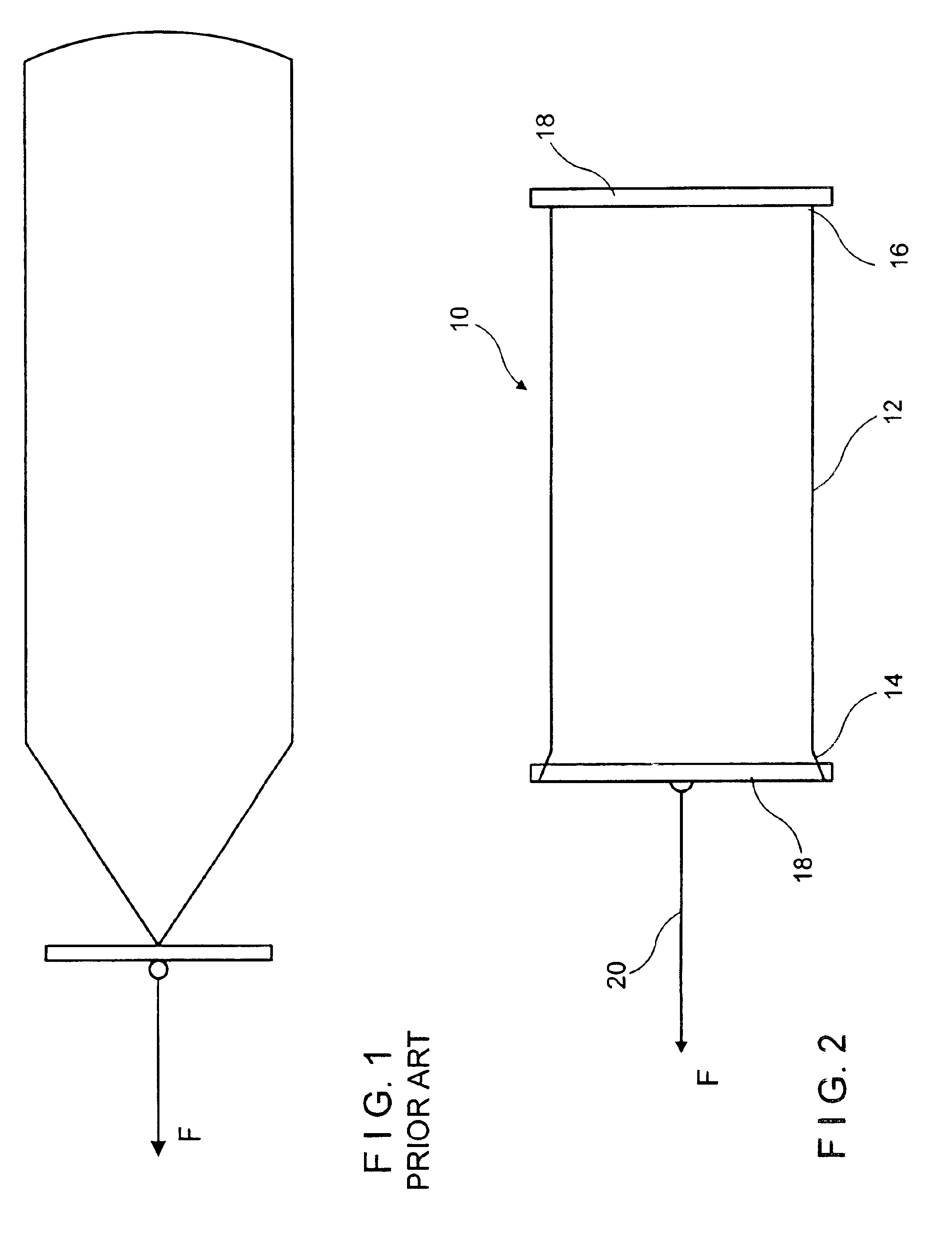Flexible fluid containment vessel
a technology for fluid containment vessels and containers, applied in special-purpose vessels, vessel construction, transportation and packaging, etc., can solve the problems of not only the cost involved in using such a transport vehicle, but also the added expense of its return trip, unloading, and unloading, etc., and achieve the effect of preventing the deterioration of the container
- Summary
- Abstract
- Description
- Claims
- Application Information
AI Technical Summary
Benefits of technology
Problems solved by technology
Method used
Image
Examples
Embodiment Construction
The proposed FFCV 10 is intended to be constructed of a seamless woven impermeable textile tube. The tube's configuration may vary. For example, as shown in FIG. 2, it would comprise a tube 12 having a substantially uniform diameter (perimeter) and sealed on each end 14 and 16. It can also have a non-uniform diameter or non-uniform shape. See FIG. 5. The respective ends 14 and 16 may be closed, pinched, and sealed in any number of ways, as will be discussed. The resulting coated structure will also be flexible enough to be folded or wound up for transportation and storage.
Before discussing more particularly the FFCV design of the present invention, it is important to take into consideration certain design factors. The even distribution of the towing load is crucial to the life and performance of the FFCV. During the towing process there are two types of drag forces operating on the FFCV, viscous drag and form drag forces. The total force, the towing load, is the sum of the viscous a...
PUM
| Property | Measurement | Unit |
|---|---|---|
| Length | aaaaa | aaaaa |
| Structure | aaaaa | aaaaa |
| Size | aaaaa | aaaaa |
Abstract
Description
Claims
Application Information
 Login to View More
Login to View More - R&D
- Intellectual Property
- Life Sciences
- Materials
- Tech Scout
- Unparalleled Data Quality
- Higher Quality Content
- 60% Fewer Hallucinations
Browse by: Latest US Patents, China's latest patents, Technical Efficacy Thesaurus, Application Domain, Technology Topic, Popular Technical Reports.
© 2025 PatSnap. All rights reserved.Legal|Privacy policy|Modern Slavery Act Transparency Statement|Sitemap|About US| Contact US: help@patsnap.com



